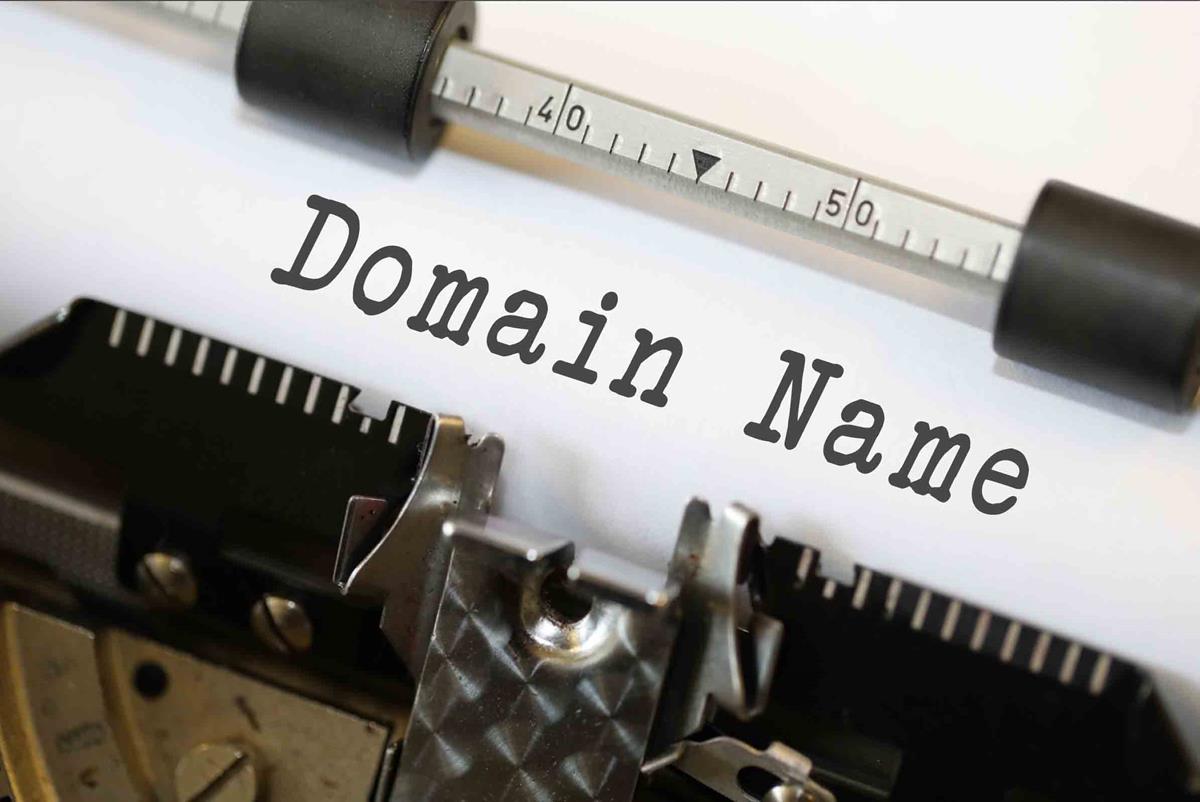
In our academic journey, regardless of the educational level, attendance was marked using a book or document—be it on a daily or weekly basis, depending on the institution. Even post-graduation, our records are scrutinized by the institution, and our names persist in the documentation. Now, let’s draw a parallel to domain name registration. Before delving into the discussion on the best domain name registrar in Nigeria, let’s first comprehend the meaning of domain names. Buckle up, as we embark on this informative journey.
Meaning of Domain Name
A domain name serves as your website’s address, allowing users to access it by typing it into a browser’s search bar. In simple terms, it acts as a guide for both current and potential clients, akin to entering an address in Google Maps. Each domain name is unique and specific to a single site, as exemplified by xtz.com.
Typically, a domain name consists of three parts, separated by dots:
1. Subdomain or third-level domain (e.g., www)
2. Second-Level Domain (SLD), representing the website’s name
3. Top-Level Domain (TLD), such as com
For instance, analyzing the URL www.webmable.africa reveals the complete domain name as “www.webmable.africa.” In this breakdown, “www” is the subdomain, “Webmable” is the SLD (name of the website), and “Africa” is the TLD. It’s worth noting that in contemporary usage, including the “www” prefix when typing a domain name is often unnecessary.
Types of Domain Name
Domain names consist of three key elements: top-level domains (TLDs), second-level domains (SLDs), and third-level domains or subdomains. When selecting domain types, it’s essential to ensure each part reflects your business, aligns with your industry, and enhances your brand. Let’s explore the various components:
1. Top-Level Domains (TLDs):
– TLDs, also known as extensions or domain endings, are the suffixes following the last dot in a web address. For instance, in www.indeed.com, the TLD is “.com.”
– Generic TLDs (gTLDs) don’t represent specific countries or territories. Managed by the Internet Corporation for Assigned Names and Numbers (ICANN), some main gTLDs include .com (for commercial businesses), .org (for nonprofits), .gov (for government agencies), and more.
– Specific requirements may apply for certain gTLDs. For example, only accredited educational institutions can have .edu domains, and .gov is reserved for government websites.
2. Country-code TLDs (ccTLDs):
– ccTLDs are two-letter domain extensions representing countries or geographic locations. Initially intended for residents of that country, some nations now allow external entities to register under their country code.
– Examples of ccTLDs include .us (United States), .fr (France), .uk (United Kingdom), .ng (Nigeria), and many more.
3. New gTLDs:
– Introduced by ICANN in 2013, new gTLDs offer diverse domain extensions, with over 1,300 expected in the coming years. Examples include .co, .app, .cool, and .club.
– Some companies opt for custom TLDs with their brand names for a unique online presence.
4. Second-Level Domains (SLDs):
– SLDs form the primary part of a domain, also known as the domain title. In www.webmable.africa, “webmable” is the SLD.
– Choosing an SLD involves combining words, numbers, or hyphens to describe your business or website.
5. Third-Level Domains or Subdomains:
– Subdomains precede the second-level domain in a URL, indicating the server type connected to when accessing website data. While www. is the most common third-level domain, it’s now optional.
Subdomains are often utilized to represent specific sections of a website, like
- shop.website.com: Utilizing “shop.” or “store.” as a subdomain effectively guides visitors to the e-commerce segment of your website, facilitating a seamless experience for browsing and purchasing your business’s products or services. This streamlined approach ensures customers can efficiently explore and buy from your online store.
- Blog.website.com: Numerous businesses incorporate a blog section on their website to enhance online visibility, attract traffic, and market their products. Employing “blog.” as a subdomain provides a strategic avenue for businesses to efficiently promote their digital content, fostering effective communication with their audience.
- Support.website.com: Integrate a “support.” subdomain if your website provides customer support services, valuable resources, or tutorials. This approach aids in streamlining customer inquiries and resolving issues efficiently, enhancing the overall support experience for your users.
- App.website.com: For those looking to host an application on their website or enable internet access for users, having an “app.” subdomain can be advantageous. This approach ensures clarity, signaling to users that they are accessing the online version of the application.
In summary, understanding these domain name elements empowers businesses to strategically build their online presence, ensuring alignment with their brand identity and industry.
.
Benefits of Domain Name
Whether you’re managing an established business or envisioning a startup, establishing a robust online presence is imperative. Typically, the initial action taken by potential customers in search of your product or service is to conduct a web search. Having a website that is easily discoverable and user-friendly significantly enhances the likelihood of converting leads into sales.
In the contemporary landscape where a majority of shopping occurs online, the dynamics of marketing have undergone substantial changes. A well-crafted and consistently maintained website emerges as one of the most impactful and enduring methods to connect with potential customers. From a marketing perspective, selecting the right domain name allows you to cultivate a lasting brand image.
Benefits of a strong domain name
Choosing and registering a domain name demands careful consideration and should not be rushed. It represents a valuable marketing and search tool that plays a pivotal role in guiding customers to your website. Deliberate thought and thorough research should be employed, recognizing that this decision could be among the most crucial when establishing your presence in the online market.
- – Enhances professional credibility and distinguishes your business from numerous get-rich-quick-scheme websites.
- – Offers visibility for your brand, akin to a storefront window, fostering awareness and attracting customers.
- – Establishes your business as tech-savvy and forward-thinking, irrespective of whether you sell products online.
- – Provides mobility for your internet presence, enabling seamless transitions between web hosting services, relocation, or changes in server usage.
- – Boosts search engine ranking over time, making your domain name more recognizable on platforms like Google and attracting increased customer traffic.
- – Grants your brand global marketability or the option to focus specifically on a local region.
- – Ensures perpetual online presence with low annual fees, in contrast to traditional marketing methods, preventing domain expiration when regularly maintained.
How to decide on a domain name
Your brand communicates everything about you—your values, identity, and commitment. So why should your domain name be any different? Before making a choice, it’s essential to acquaint yourself with the various styles and types of domain names available, empowering you to make the best decision for your specific needs.
For a new startup, it’s advisable to choose a domain name that either parallels or, ideally, matches the company name. This approach directs customers to your site without any confusion, presenting a valuable opportunity to select a unique business name that is also available as a domain before your official introduction to the world.
Length of domain name
Choosing a domain name is more effective when it’s short, easy to remember, and ideally falls within the range of 6-10 letters, with 8 being the optimal length. The emphasis lies in simplicity, conciseness, and ease of typing, favoring these attributes over longer, more descriptive names.
Opting for a shorter domain reduces the likelihood of misspelling during typing. When combining words in a domain, exercise caution with letters that may not naturally link or could cause confusion, as exemplified by the less-than-ideal case of expertsexchange.com for the site Experts Exchange.
To enhance user experience, it’s advisable to steer clear of hyphens and numbers, which can complicate and frustrate users. Always keep in mind: simplicity is the key to an effective domain name.
Keywords
Keywords, representing words associated with a product or service, can be incorporated into a domain name, exemplified by best-vacuum-cleaners.com, known as an Exact Match Domain (EMD). While there is a common assumption that using keywords or EMDs boosts website traffic, Google has evolved its algorithm to devalue strict reliance on keywords, favoring sites with a robust sense of branding. This shift is Google’s strategy to sift through online “noise.”
Nevertheless, utilizing keywords in a domain isn’t inherently detrimental. From a marketing perspective, a domain like best-vacuum-cleaners.com provides clarity about the products offered. However, caution is advised as excessive use of keywords may be perceived as spam, potentially impacting Google ranking negatively.
A more effective approach involves creating a compelling brand image and supplementing it with valuable and original web content. This strategy establishes a trusted online presence, contributing more substantially to long-term success.
How to Choose the best domain name
- Choose a short and simple domain name
Short and simple domain names are key for better memorability, translating to increased traffic. Aim for a length of 6-14 characters, according to WebsiteSetup.org.
However, a short domain is ineffective if it’s challenging to spell or pronounce. Users may struggle to type your website URL accurately, emphasizing the importance of simplicity in both length and usability.
- “Simplify Your Domain Name
Avoiding hyphens, numbers, and doubled letters is advised. These elements create unnecessary obstacles for users accessing your website, as they are not intuitive and can make the domain name messy and difficult to read.
Furthermore, these elements increase the likelihood of typos when users search for your business online. When sharing your website verbally, such as through word-of-mouth with clients, a domain name free from hyphens, numbers, and repeated letters is clearer and easier to convey.
- Incorporate Relevant Keywords
Conduct concise keyword research to guide your domain name selection. Striking a balance is key; aim for brevity while choosing keywords with low to medium competition for potential SEO advantages. Ensure the selected keywords align with your brand identity.
- Conduct Thorough Research
In addition to keyword exploration, avoid the disappointment of stumbling upon what appears to be the ideal domain name, only to realize it infringes on a trademark. Ensure your chosen domain is genuinely original to sidestep legal issues and the hassle of hunting for another distinctive, SEO-friendly domain name.
Best Domain Registrar In Nigeria
As adults, we seek the best in life, and as children, we aspired for the best as well. Your business should not be an exception to experiencing the finest offerings.
Introducing the premier domain registrar in Nigeria, Webmable, boasting over 10,000 users. Their services are characterized by speed, security, and reliability, coupled with impeccable customer support. Explore www.webmable.Africa today, and your business will undoubtedly benefit from the excellence it deserves.
Always bear in mind that your domain name is synonymous with your brand identity, deserving nothing less than the best.



